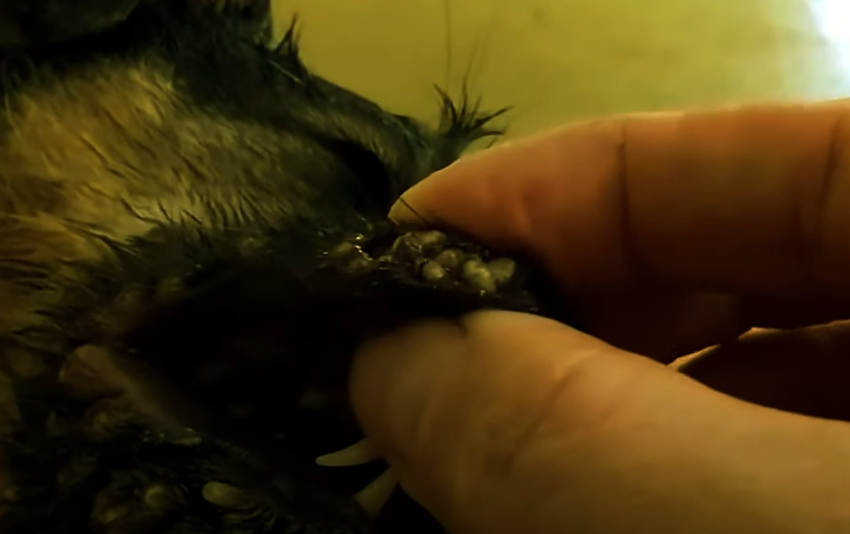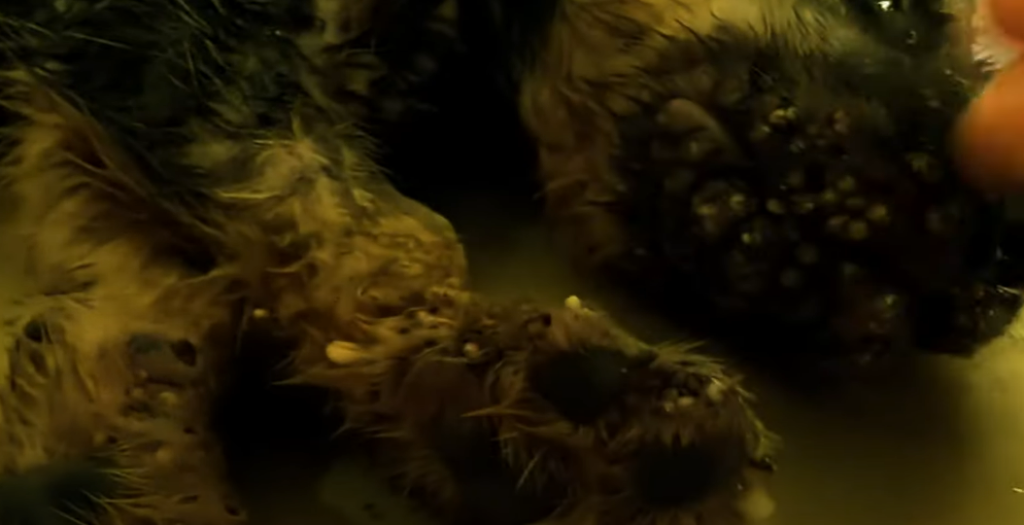Title: Cleaning Mango Worms: A Necessary Procedure for Pet Owners
Mango worms, scientifically known as Cordylobia anthropophaga, are parasitic larvae that infest mammals, including dogs, cats, and sometimes even humans, particularly in sub-Saharan Africa. These tiny creatures can cause discomfort, irritation, and even health issues if left untreated. One of the crucial steps in managing a mango worm infestation is the cleaning process. In this article, we’ll delve into the importance of cleaning mango worms and the proper techniques to do so.

Understanding Mango Worm Infestation
Before discussing the cleaning process, it’s essential to understand how mango worms infest animals. These larvae typically enter the skin of mammals through contact with contaminated soil or from the fur of infected animals. Once they penetrate the skin, mango worms create a small lump or boil, where they grow and develop. As they mature, they cause irritation, itching, and sometimes infection.
Importance of Cleaning Mango Worms
Cleaning mango worms is vital for several reasons:
- Preventing Infection: Mango worm infestations can lead to secondary bacterial infections if the wounds are not properly cleaned. Cleaning helps remove debris, bacteria, and dead tissue, reducing the risk of infection.
- Alleviating Discomfort: Infected animals experience discomfort and itching due to the presence of mango worms. Cleaning the affected area can provide immediate relief by removing the larvae and soothing the skin.

- Promoting Healing: Proper cleaning promotes faster healing of the wounds caused by mango worm infestation. It allows the skin to breathe and regenerate, aiding in the recovery process.
Techniques for Cleaning Mango Worms
Cleaning mango worms requires careful attention to ensure thorough removal and prevent further complications. Here are the steps involved:
- Prepare the Cleaning Area: Choose a well-lit and clean area for the procedure. Gather all necessary supplies, including gloves, antiseptic solution, sterile gauze pads, and tweezers.
- Wash Hands and Wear Gloves: Before handling the infected area, wash your hands thoroughly with soap and water. Wear disposable gloves to prevent the spread of infection.
- Clean the Wound: Gently cleanse the affected area with mild soap and warm water to remove dirt, debris, and crusts. Pat the area dry with a clean towel.
- Remove Mango Worms: Using sterilized tweezers, carefully grasp the mango worm at the base and pull it out in a straight motion. Avoid squeezing or breaking the worm, as this can release harmful toxins.

- Apply Antiseptic: After removing the mango worms, apply an antiseptic solution to the wound to prevent infection. Use a sterile gauze pad to gently dab the area.
- Monitor for Signs of Infection: Keep a close eye on the wound for any signs of infection, such as redness, swelling, or discharge. If infection occurs, seek veterinary assistance promptly.
- Follow-Up Care: Continue to clean the wound regularly and monitor your pet’s condition until the area has healed completely. Consult a veterinarian if the infestation persists or worsens.
Conclusion
Cleaning mango worms is a crucial step in managing infestations and ensuring the well-being of affected animals. By following proper cleaning techniques and monitoring for signs of infection, pet owners can help alleviate discomfort, promote healing, and prevent further complications associated with mango worm infestations. If unsure about the cleaning process or concerned about your pet’s condition, always seek professional veterinary advice.





